Inspired by lichen-covered rocks, wet cobblestone streets and the expressive faces of her family and friends, Swedish textile artist Malin Lager creates highly detailed ‘paintings’ with her favourite 1984 Pfaff sewing machine. Her pictures, crafted of meticulously stitched layers of fabric and thread, are so lifelike they are often mistaken for oil paintings.
Malin begins with lustrous, coloured strands of fine silk which she builds up in a many-hued cascade of tiny darning threads over a patched fabric background, similar to the traditional method of underpainting in painted art. The free motion foot on her sewing machine is expertly guided to create colour and composition in an image with shading and highlights that give it its photographic-like expression.
Working from her own photographs, the process is slow but enables her to feel her way to creating the texture that makes her works of art so astonishing.
Descending from four generations of artists, she was always supported in her creative expression, though the use of her sewing machine for textile art was a surprise discovery.
Malin’s work has been collected by The National Museum Stockholm, Sweden, the Rhoss Museum Gothenburg, Sweden, Norrkopings Museum, Sweden and Monterey Museum of Art, California, USA and has received three major scholarships from the Swedish state.
In this interview, you’ll discover how a walk in the woods near her home became the turning point in her artistic development, and how she was ‘shaken to the core’ to discover she could paint with thread. We give insights into the inspiration she gains from travelling and she reveals her biggest artistic challenge to date.
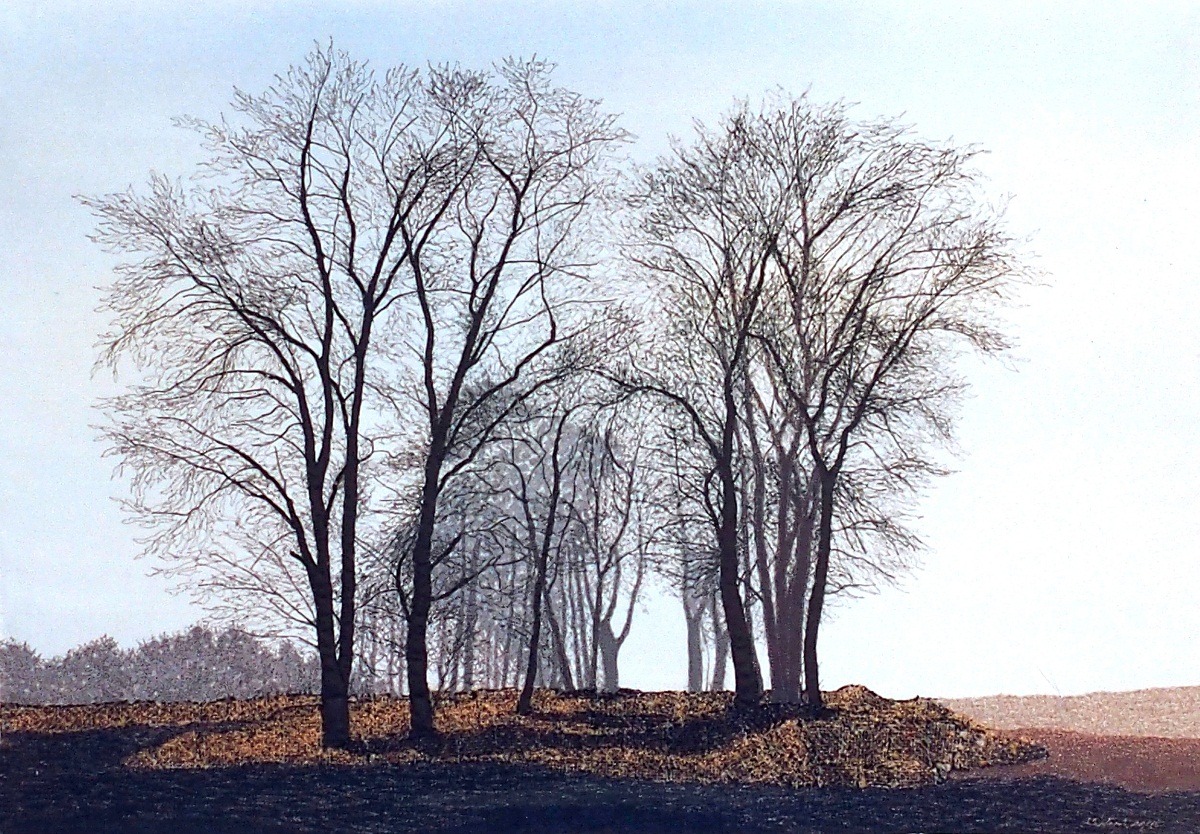
I can sew more than just clothes!
TextileArtist.org: What initially attracted you to textiles as a medium? How was your imagination captured?
Malin Lager: My art hails from a tradition of craftsmanship that reaches four generations back in time. My grandfather was a Smith and so was his father, whilst my grandmother was a furniture maker. My father was a sculptor and my mother, who is nearing 100, is a painter and a textile artist.
Growing up in rural Sweden, I lived intimately intertwined with the surrounding nature and my parents’ unrelenting endeavour to develop as artists. This has given me a strong bond to the artistic way of life and a feeling of satisfaction from the passing on of a tradition.
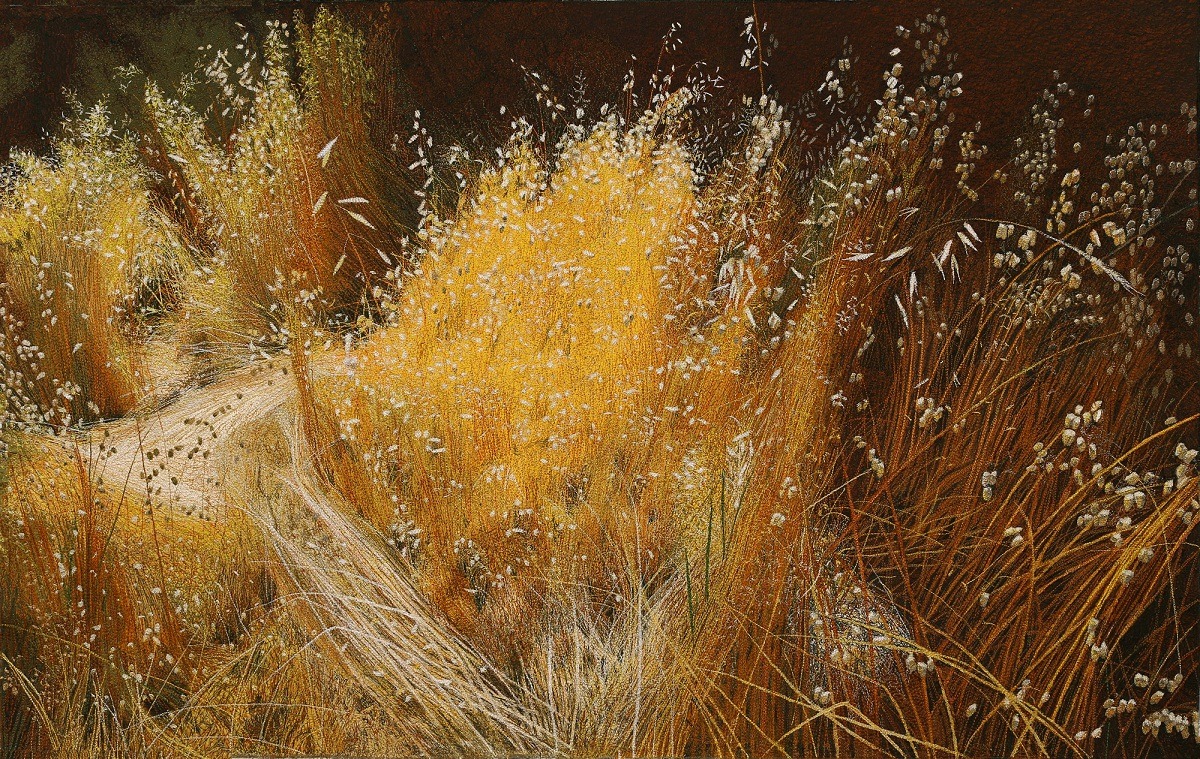
What or who were your early influences and how has your life/upbringing influenced your work?
My mother taught me to sew, to weave, to knit and to do hand embroidery. I still have vivid memories of how eager I was to learn to use my hands in connection with these materials. I was seven when I learned how to knit; I remember learning to get control over the needles and my fascination in seeing the yarn transform into something useful.
I used to watch my mother embroidering, making stitches on an empty cloth stretched over an embroidery hoop. It gave me an intense feeling of pleasure, just to see how she made so many kinds of stitches in different colours of thread to make a picture.
The last thing I did before moving away from home to the large city of Gothenburg, Sweden at the age of 16 was to weave a woollen cloth for a coat. Because I did the entire process all by myself, I felt protected by it, as if I had made myself a suit of armour to face my new life.
My father’s work in three dimensions was another interest of mine.
Later, I was married to a painter and we explored the art scene together, both in Sweden and other countries.
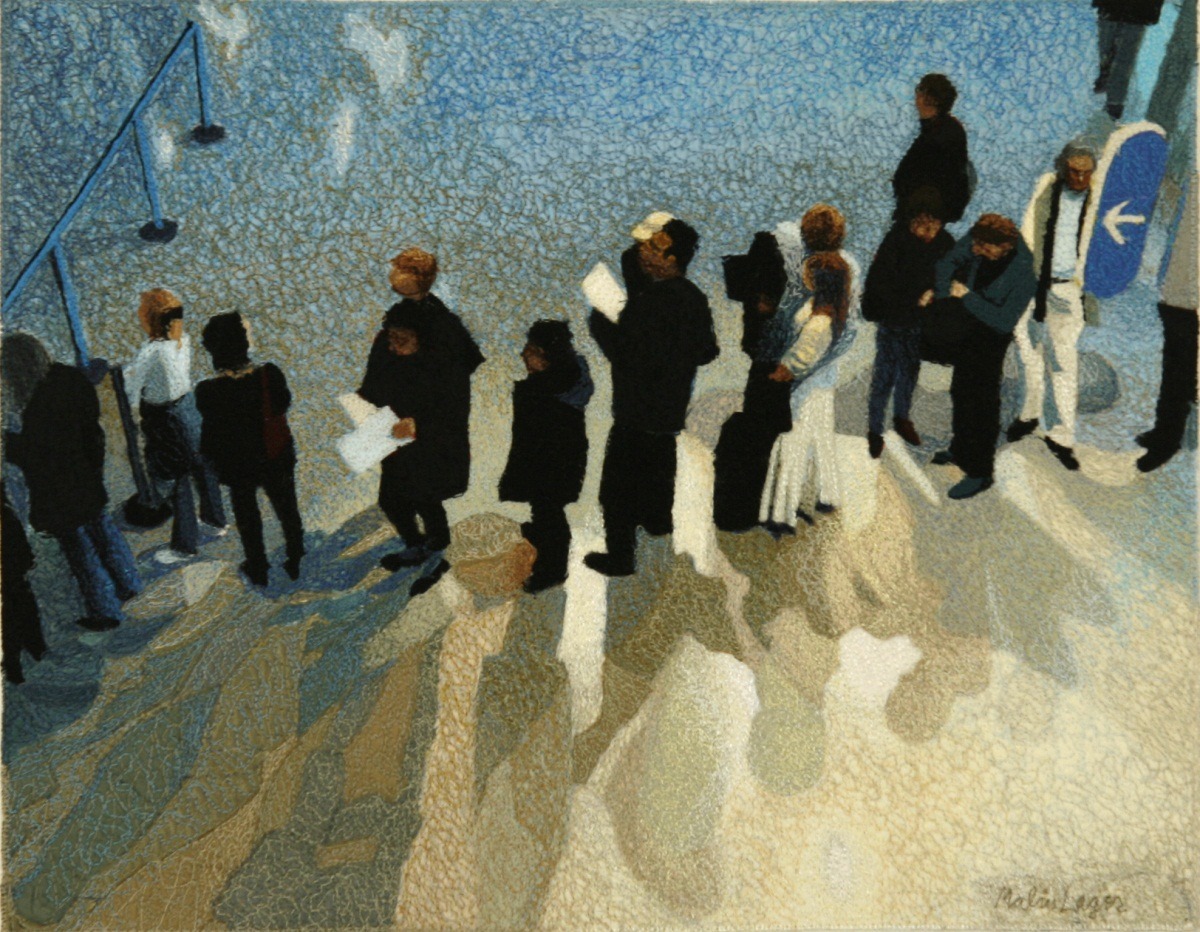
What was your route to becoming an artist?
I actually chose to study sculpture when I went to art school in Gothenburg. I was there for two years before realizing that my real aim was to experiment with textiles. Still, the experience I gained with working in three dimensions has proven very useful. To know the anatomy of things is valuable when working with images.
My experiment with textiles started off by cutting thick strips of cloth to crochet with a very large crochet hook. It was wild, with no boundaries and free forms that could take me anywhere, and it was fast.
I also bought myself a loom. I had seen old rugs from the 1800s and wanted to create similar patterns, and I also painted at this time. I made a big collage with paper coloured with tempera. I was very inspired by the Russian painter Vasilij Kandinsky at the time.
1983 was a turning point. I had wandered amidst the grand trees where I lived, and as I came home I sat down by my sewing machine and started ‘drawing’ what I had experienced. I captured the intricate pattern of the twigs against the sky with a dark thread onto a light fabric.
My discovery that I could use my sewing machine artistically shook me to the core. It was a revelation that I could sew more than clothes! I discovered that I had the ability to create images with materials and tools that, for years, had felt so natural in my hands. The thin thread was perfectly suited for drawing. I have since continued to challenge myself to develop the technique by constantly finding new motifs. I think it’s important to travel to open one’s eyes, to see things in new ways.
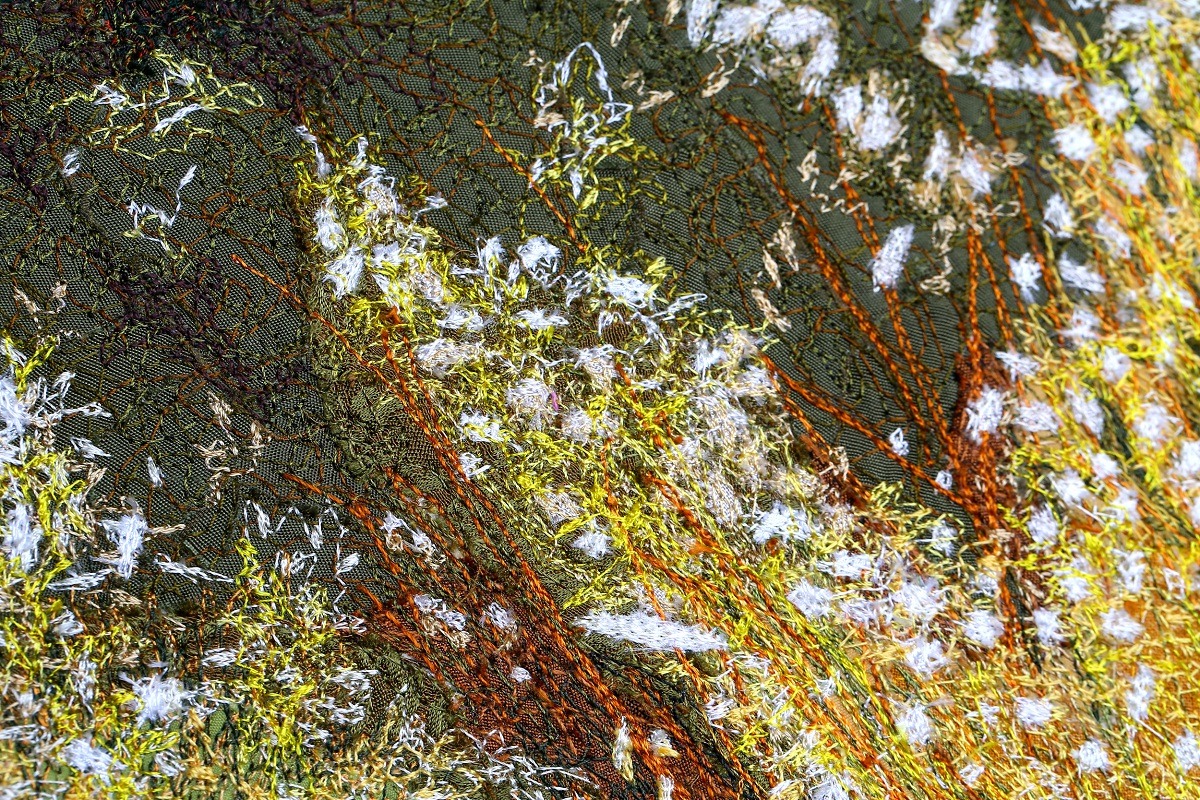
Take photos to generate new ideas
Tell us about your process from conception to creation
I’ve put a lot of thought into my studio. It’s an extension of me, an extension of my ideas, a place where they come to fruition and evolve.
I start with a coarse cotton weave; it holds my machine stitching well. I sketch my motif – it may be the shape of the face and body, initially a rough sketch and in a light-coloured thread. Then I lay out scraps of cloth in different colours as an undercoat for the background. I sew them in place, making sure they fit in with the structure and the composition. I use a darning stitch and aim for a wash effect to bring out the colours and the transitions. Then I start with the eyes – it’s so important to capture the soul in the eyes.
I travel and take pictures to generate new ideas, but the most exciting journey takes place in my studio. That is where the dynamic transformation of my thoughts actually takes place.
I shoot with the aim of developing a kind of stitched photographic image, evoking flickering TV screens – an expression of our time. But when you look more closely, you see that it’s crafted by hand. Exciting encounters!
My paint is my silk thread; it’s absolutely the right instrument for me. At times, though, I find it frustratingly slow. I envy the ability to make a quick stroke, like a painter. But there’s something about my craft in itself that’s so special. The thread winds its way across the image and creates texture, yet it is thin and delicate, allowing me to explore details. I dive into a microcosm.
Whether my inspiration is from stones and lichen or faces, there is so much tiny detail. You can’t just step on it and sew; you have to be conscious of how you shape each tiny piece.
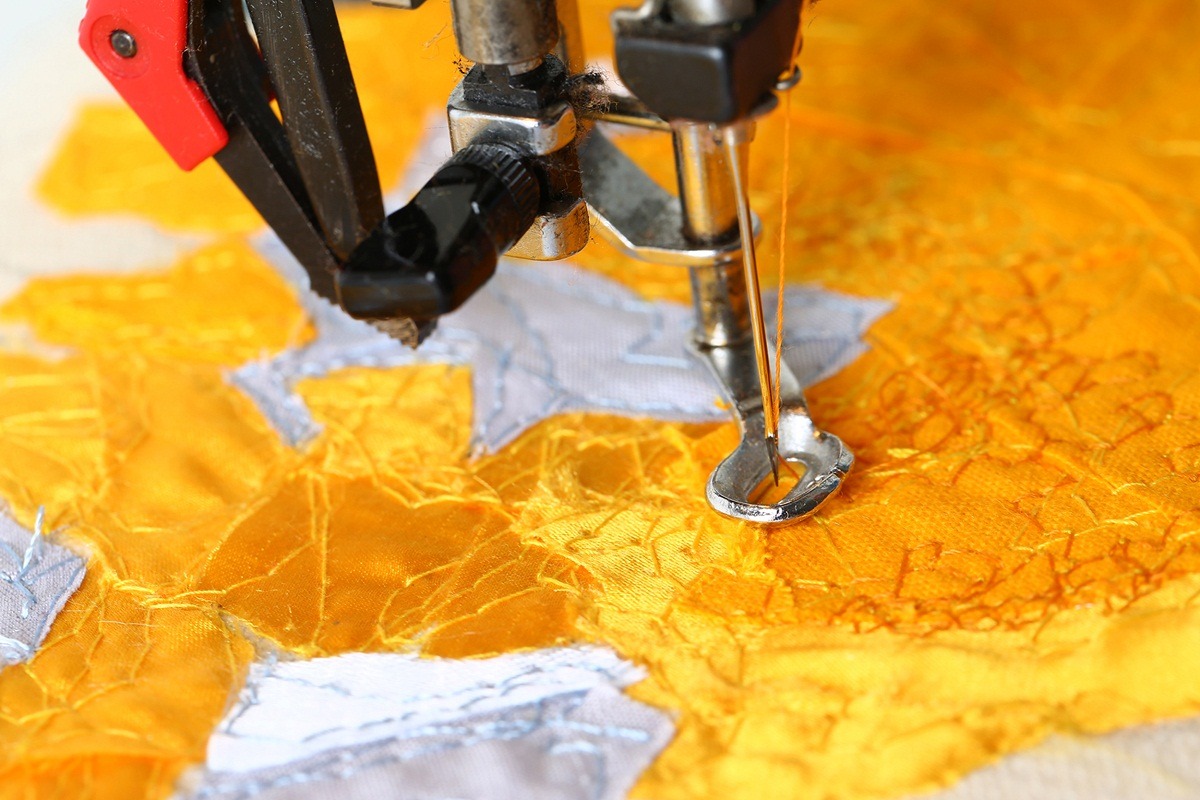
Tell us a bit about your chosen techniques and how you use them
My camera is an important tool for me in my process. Whether I find the image in nature or in my studio, a photo is my starting point.
The motif is built up with a base of small, coloured pieces of different materials. Very often it is silk because of its beautiful shine. This is covered by thousands and thousands of stitches which create nuances of shades. The threads create a shimmering surface.
I use a regular sewing machine – a Pfaff 1229, from 1984. The ease of changing threads, which I do very often, makes this uncomplicated machine a perfect fit for me. The feeder of the sewing machine, which usually moves the fabric forward, is detached. I use a walking foot that is specifically for lockstitch. The fabric lies loose, the needle goes up and down, and I move the fabric as I wish. In this way I can ‘paint’ with the sewing machine.
It’s a rigorous and time consuming process, to say the least. It is not unusual for me to work for 3 to 4 months on a single canvas.
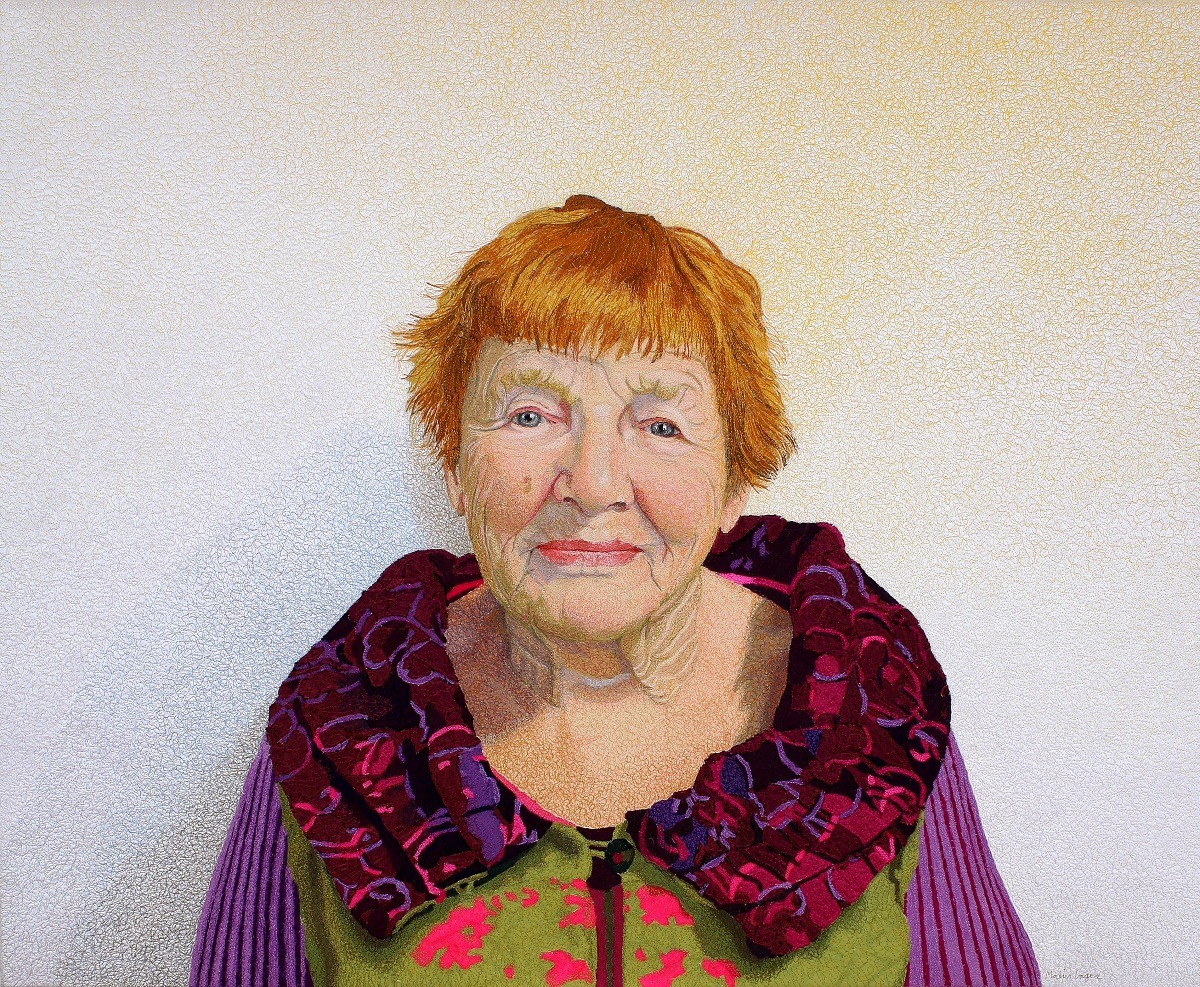
What currently inspires you?
After years of creating pictures from nature, I was suddenly seized by the desire to work with the human face. I saw two films – one about the Dutch painter Johannes Vermeer and one about the American photographer Mike Disfarmer. Who would not be inspired by Vermeer’s wonderful paintings! But what really took hold of me was the way Disfarmer just had his subject stand against a white wall – no more, no less. ‘See the human being’ became my motto.
I have been doing this now for the last eight years. In the beginning, I asked family and friends to be my models. Portraits are very challenging; fine thread is needed to help capture the nuances of skin and eyes in order to make the subject come to life. This has been my biggest artistic challenge to date, but it has also been a very rewarding one.
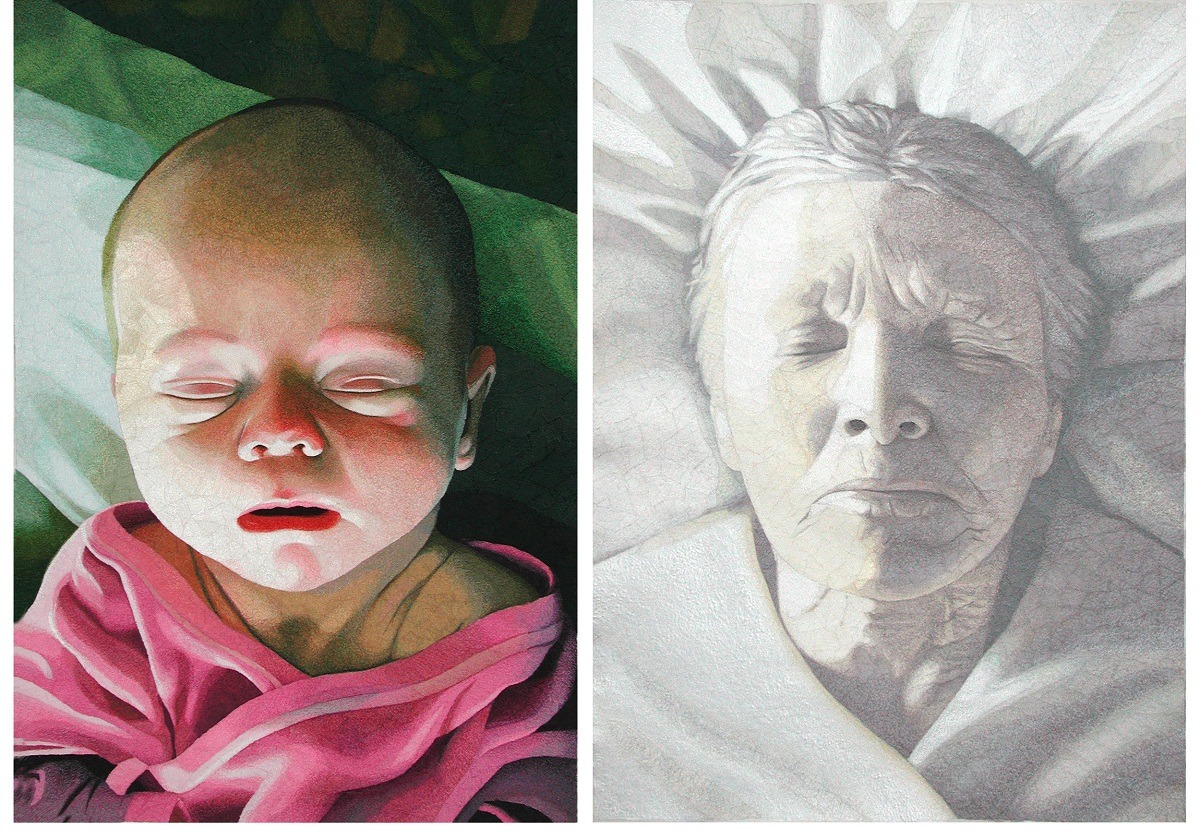
Just begin, and the intricacies and nuances will follow
Tell us about a piece of your work that holds particularly fond memories and why?
The pieces called ‘Birth and Death – Both a Birth’ came to life in the synchronistic juxtaposition of my father’s passing and the birth of my third grandchild. The experience gave me an immense feeling of peace and reconciliation, and a deep recognition of the circle of life.
Another work which has meant a lot to me is Lustrous Reflections of Venice. It came about as a result of a trip to Venice. Many consecutive days of intense rain were followed by a brilliantly sunny morning, which drew me out into the streets. There, I underwent a profound experience regarding time. On the one hand I felt that the stones, laid down so long ago by human hands and worn smooth as velvet over centuries by human footsteps, embodied the past and the passage of time, Yet, on the other hand, I intensely felt the present moment, the sky mirrored in the water puddles which had collected on the surface of the stones.
Lustrous Reflections of Venice consists of 28 pieces, 30×40 cm each, which come together to form a whole. In total it is nearly 4 metres wide. It is the answer to a question that I had been pondering: “Would it be possible to capture an essence of Venice with tiny stitches that form a piece of considerable size?”
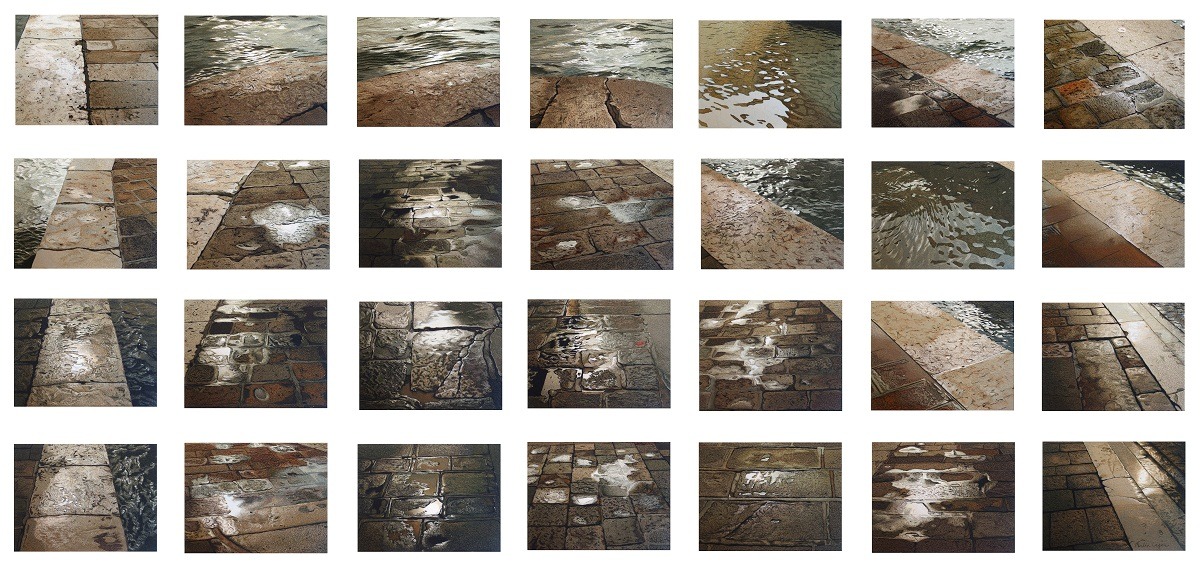
How has your work developed since you began and how do you see it evolving in the future?
While my basic technique is essentially the same today as when I began 35 years ago, from simple drawing it has become far more intricate and nuanced, and has developed in ways I could not have imagined when I started out on this path.
Sometimes I long for a simpler method, something perhaps not so exacting and painstaking. I have a growing sense, though, and a trust, that something new will evolve out of that longing.
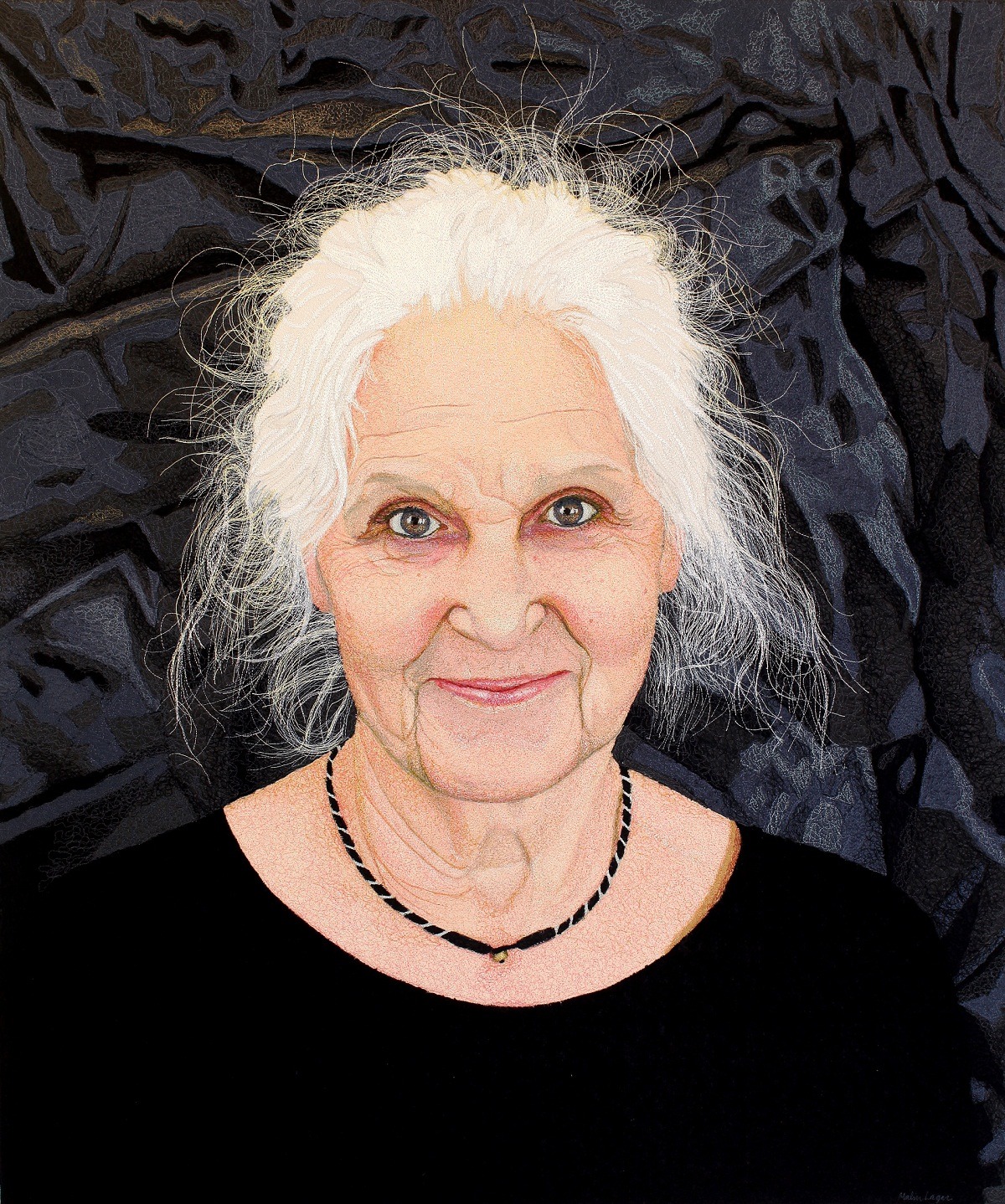
What advice would you give to an aspiring textile artist?
Follow your heart. There are so many ways to work with textiles. Be curious, and look for what is happening in the textile world and find what inspires you.
For more information visit www.malinlager.se
If you have friends or are on social media groups who might be inspired by this article, why not share it? It’s easy – click on the buttons below!
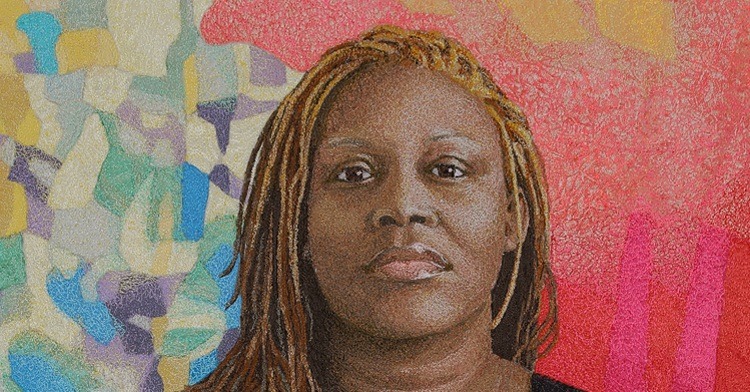
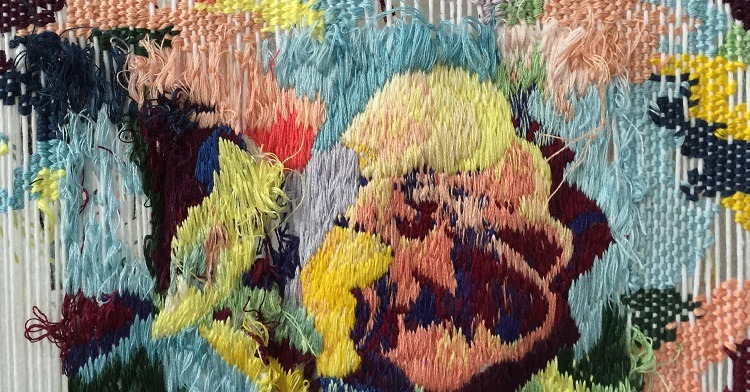
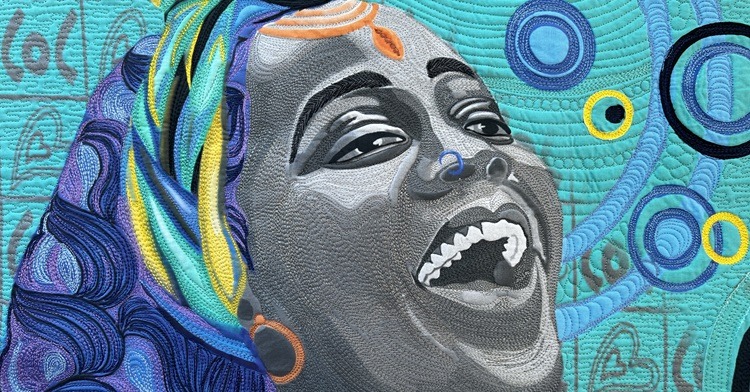
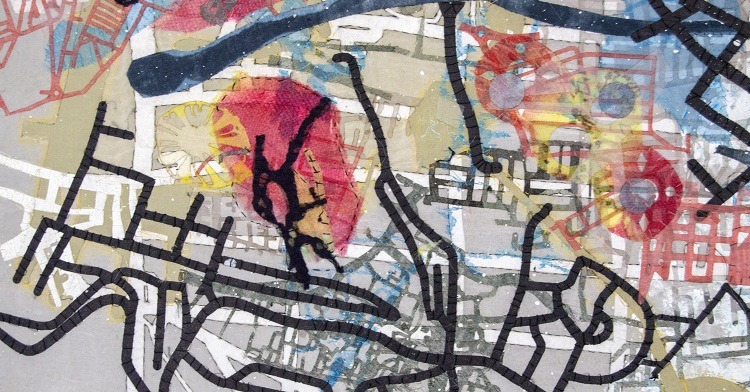
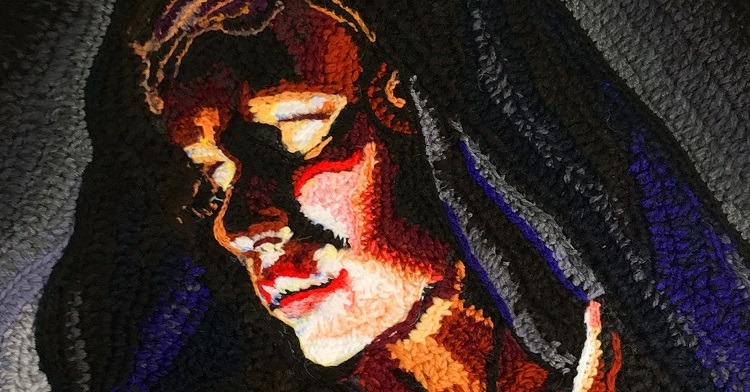
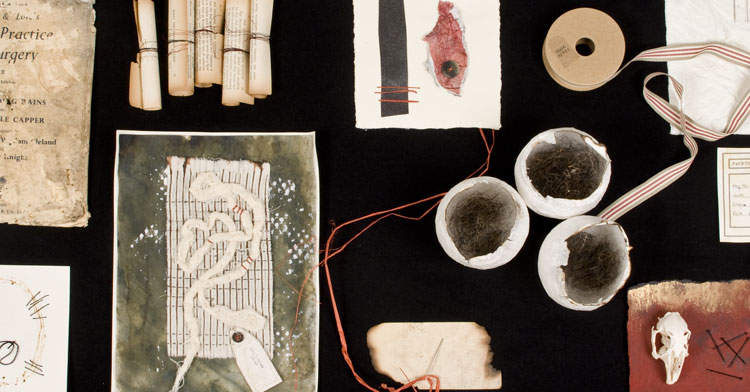
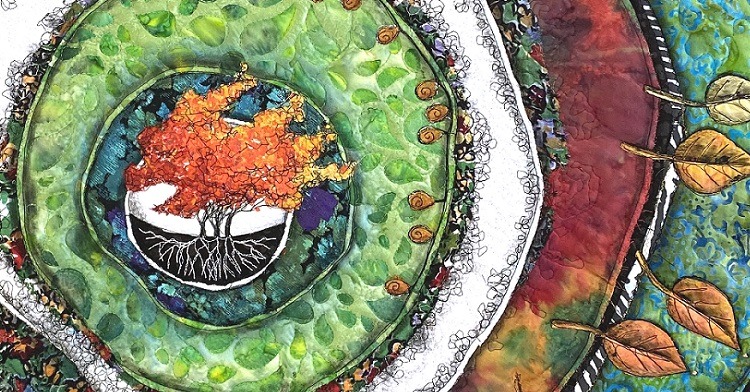
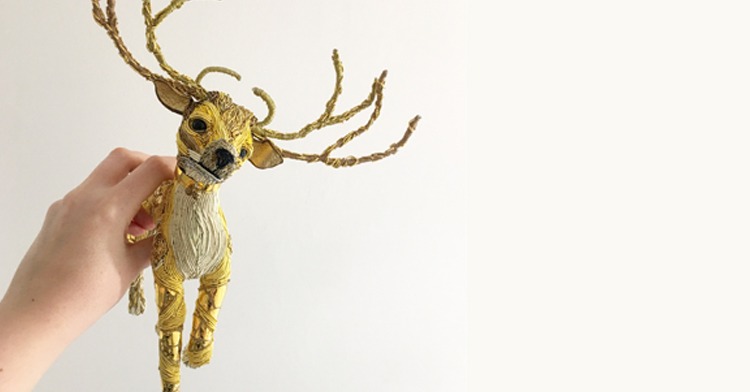
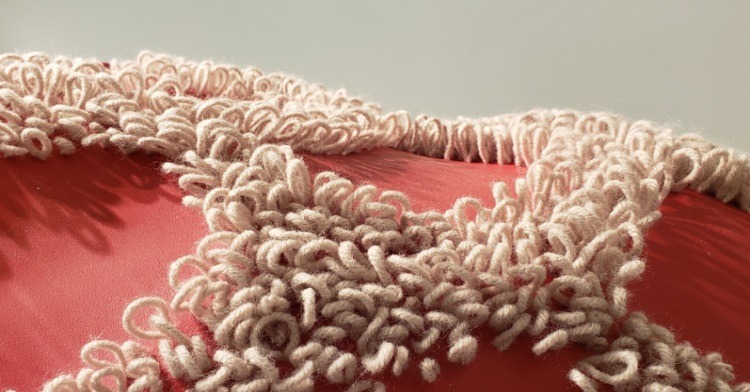
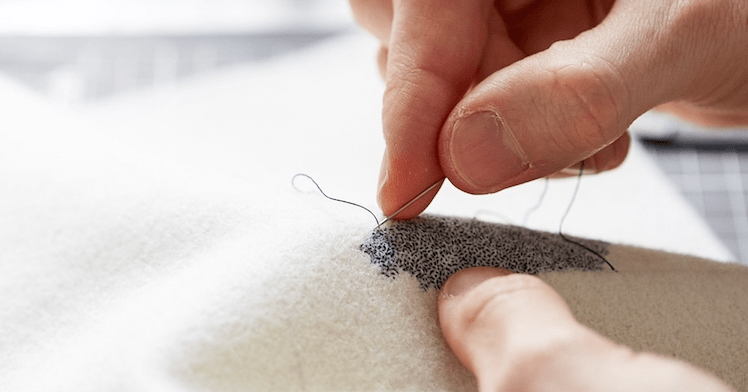
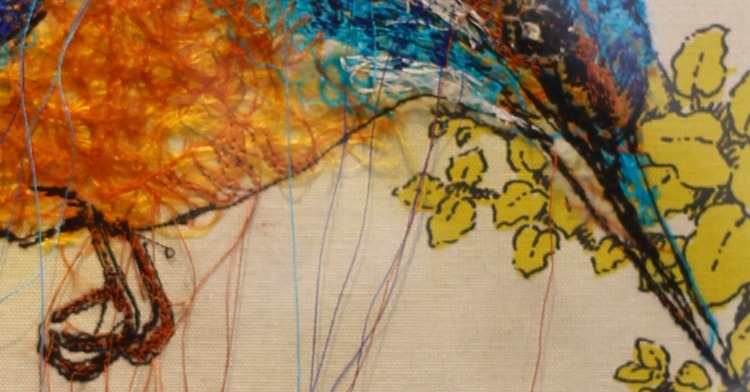
11 comments
Kit Sutherland
I find this encouraging because I am not so young and my hands don’t always help me express myself. The value of using the machine as a help with value in its own right is important. Thanks you.
Ivonne
Amazing work its so hard to believe they are stitched!!
Catherina Petit-van Hoey
What an amazing works of art. Such a skill and perfection! The portraits are especially stunning. They seem to have come to life. Thank you, Malin for sharing your beautiful work to the world.
rose
i can only marvel at your work! The attention to detail that you put in your work must be a blessing as it creates such incredible and accurate pieces, but also a curse as i am sure nothing is stitched quickly onto the canvas without a care about the finished result.
thank you for showing us your beautiful work
Margaret Ferguson
Totally inspirational, I will get some of my thousands of photos out now.
I love your work, Malin
I.M.
This is really amazing, Malin is a wonderful artist! Thank you for this inspiring article.
Deborah A Williams
Great article. It is so inspiring to see great works of art. Malin is so talented in her use of thread. Thanks.
Nancy Latham
What incredible works of art you make, Malin! I can only imagine how wonderful they must be seen in real life.
And thank you, TextileArtist.org for continuing to find and share the work and words of amazing artists.
Mary Williams
What an inspirational artist. I have been a textile artist for a decade and have seen the work of many other artists but the work of Malin is amazing. Thank you for the article.
Chris McGuigan
I have loved reading this article for its inspiring and insightful look at an amazing artist. Thanks for the article and thanks to Marlin for sharing her story.
Barbara Bexley
What a wonderful article, guys. And what a talented woman you are, Malin – a true artist. Both your skill and your insight into the subjects you choose are a joy to behold. Thank you for sharing your ideas and your art with us.